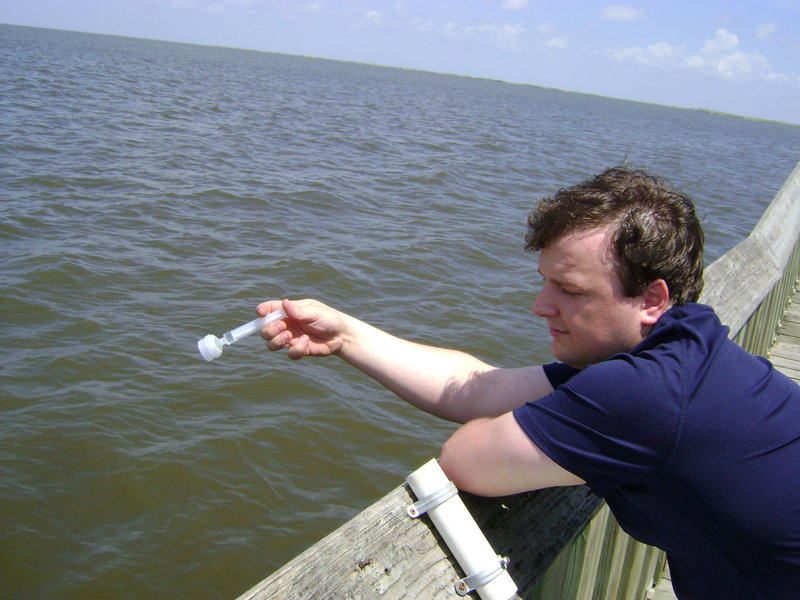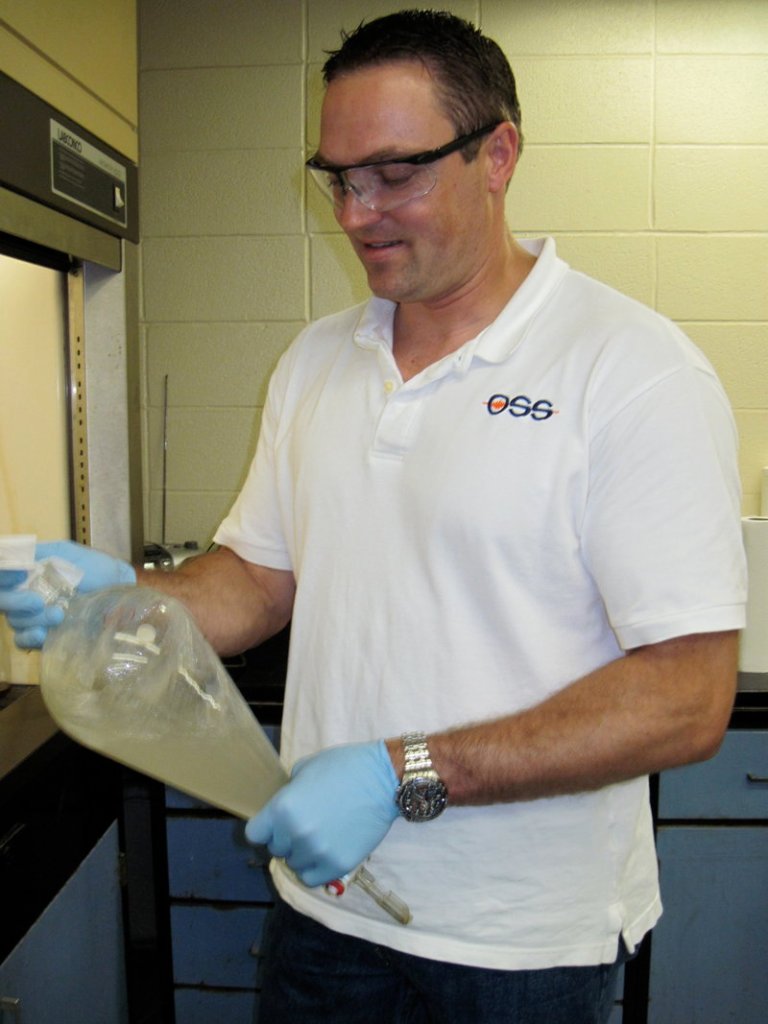LAFAYETTE, La. – Dean Smith and Tom Schwarz of Orono arrived here late last week hoping to attract interest in their technology from those who are responsible for cleaning up the BP oil spill.
They haven’t gotten very far.
The two work for Orono Spectral Solutions Inc., a University of Maine spinoff that develops products that detect and identify chemical and biological targets with optical spectroscopic techniques.
They have developed a way to quickly pinpoint minute amounts of oil in water, one that is cheaper and faster than methods now required by the U.S. Environmental Protection Agency.
They came here offering to test for oil in the Gulf of Mexico. Despite encouragement from U.S. Sen. Susan Collins’ office and from EPA officials in the field, Smith said it looks like it will be a long process to get the product into the hands of people who could use it right now.
“At a time when people here are in need of more and timely information, which is what we have to offer, this is disappointing, working toward maddening,” said Smith, who was a star athlete at UMaine.
Smith said he isn’t even asking for any money.
Smith and Schwarz aren’t the only Mainers who are peddling their technology and know-how in the region this week.
Chip Pearson of Packgen in Auburn has been here since Sunday, hoping to sell his company’s oil containment booms to municipalities and environmental businesses involved in the cleanup.
Although there is a shortage of booms, and a BP representative has made favorable reports about Packgen’s product, there have been no sales.
U.S. Sen. Olympia Snowe and Gov. John Baldacci visited the plant in Auburn this month to lend their support.
Pearson has been on a whirlwind tour, hitting Houma, New Orleans and Venice in Louisiana, then moving on to Alabama. On Monday, he intersected twice with President Obama’s motorcade.
On Tuesday, as he was leaving Theodore, Ala., he spoke by phone from his air-conditioned car, where he got relief from 98-degree heat, and humidity that made it feel like 106 degrees.
Pearson said he understands that BP wants to make sure Packgen’s products work, but the process can be agonizing as the spill drags on.
He said the spill is so vast that manufacturers can’t keep up with the demand for cleanup equipment such as containment booms.
Pearson plans to head back to Maine tonight; Smith and Schwarz will be here until June 25.
The two spent Tuesday with Charlie Voinche, who co-owns Petroleum Laboratories in Lafayette, a city in the heart of Cajun country whose economy depends on petroleum and natural gas and on a tourism industry that’s fed by seafood from the Gulf of Mexico.
Voinche met Smith a couple of years ago in New Orleans — “at the mother of all conferences for analytical equipment,” said Voinche.
Voinche, who is always looking for ways to do things easier and cheaper, was impressed, and they got to talking.
On Tuesday, Voinche was taking water samples collected from the Gulf by the Mainers, testing them with EPA-approved methods and comparing the results using Orono Spectral Solutions’ technology.
Voinche’s company does environmental testing for companies that operate oil wells in the Gulf.
When oil is pumped from a well into a container ship, it is separated from the water, which is treated before being pumped back into the Gulf. The water must meet an EPA standard: no more than 29 milligrams of oil per liter of water.
The EPA method that Voinche must use now involves the hazardous solvent hexane, which prohibits the testing from being done outside a laboratory. It takes a week to get results, and each test costs about $82.
The method developed by Smith’s company gives immediate results, involves no volatile solvents and is cheaper, but by how much isn’t yet known.
Smith said the EPA is considering whether to allow the sampling methods developed by his company. But it might not decide in time to help with the Gulf oil spill.
Later this week, Smith and Schwarz, who were graduate students in UMaine’s Laboratory for Surface Science and Technology, plan to go back out on the Gulf to take more water samples, especially under the muck floating on top.
“We could really help,” Smith said, “because we can show what is happening below surface.”
Beth Quimby can be contacted at 791-6363 or at: bquimby@pressherald.com
Copy the Story Link
Send questions/comments to the editors.





Success. Please wait for the page to reload. If the page does not reload within 5 seconds, please refresh the page.
Enter your email and password to access comments.
Hi, to comment on stories you must . This profile is in addition to your subscription and website login.
Already have a commenting profile? .
Invalid username/password.
Please check your email to confirm and complete your registration.
Only subscribers are eligible to post comments. Please subscribe or login first for digital access. Here’s why.
Use the form below to reset your password. When you've submitted your account email, we will send an email with a reset code.